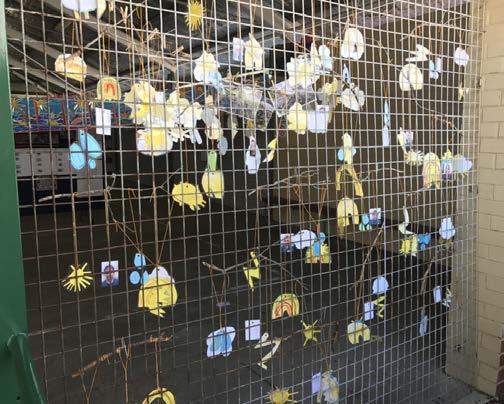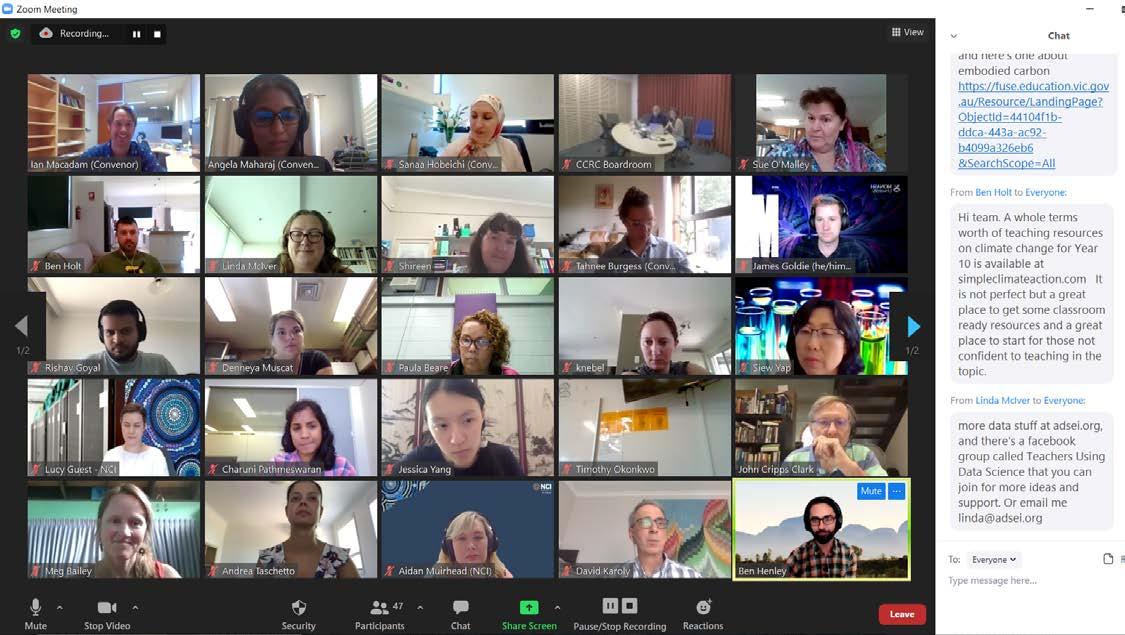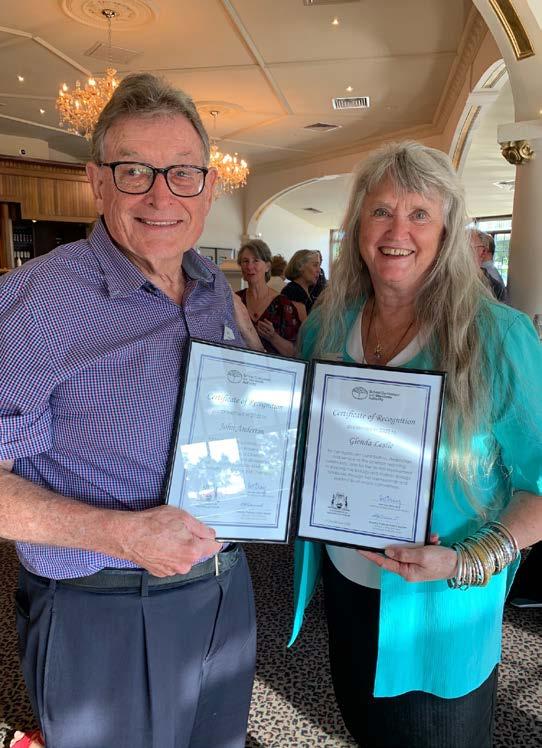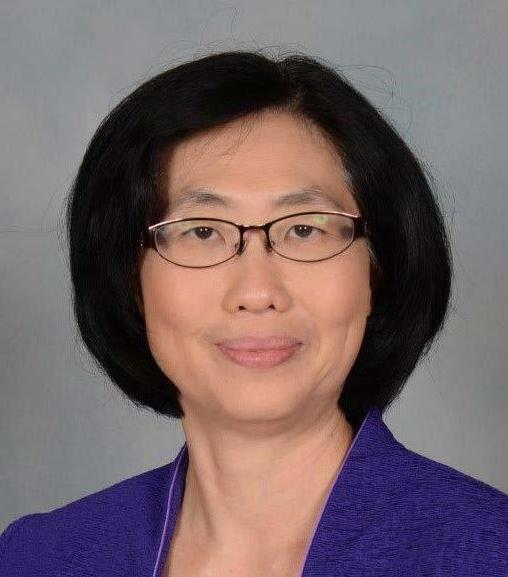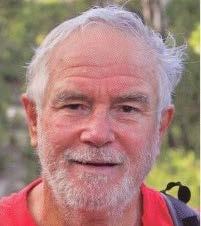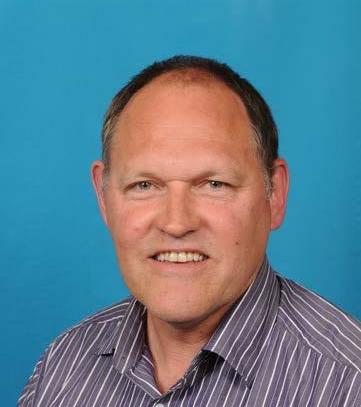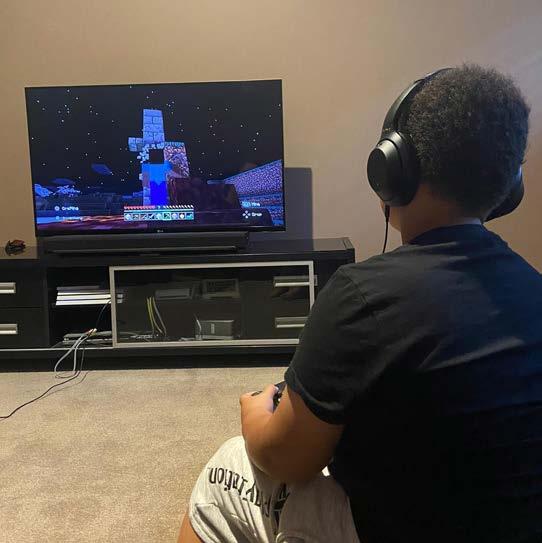
7 minute read
The Use of Mathematics in Science
from SCIOS March 2021 Volume 61
by STAWA
John West
passion vs Empathy
A couple of years ago I had the chance to attend a workshop given by Professor Dylan Wiliam, an international thought leader in assessment. I took the opportunity to ask him what he considered to be the most significant challenge facing science and mathematics educators. His response was that while the many science and mathematics teachers he had met were invariably passionate about their subject area, that teachers of other disciplines were more passionate about students!
Professor Wiliam was quick to point out that this was merely an observation based on his many years of experience and should not be regarded as criticism of teachers or in any way dismissive of their efforts. He made it very clear that he admired teachers’ commitment to continually enhancing their practice, and in particular, those who had made it their life-long pursuit. I can certainly confirm that, in my own years of experience as a mathematics teacher educator, I have rarely encountered an aspiring mathematics or science teacher who wasn’t passionate about sharing their love of their discipline with their students. However all too often, there is a significant disparity between teachers’ own (usually positive) experiences of learning science and mathematics, and that of their students.
A recent article by Burrows et al. (2020) noted that Peter Sullivan drew substantially on the work of the Mathematics Learning Study Committee in the USA (Kilpatrick et al., 2001) in developing the proficiency strands of the Australian Curriculum: Mathematics (ACARA, 2009). Kilpatrick et al. (2001) identified five interwoven and interdependent strands in the development of proficiency in mathematics: conceptual understanding, procedural fluency, strategic competence, adaptive reasoning, and productive disposition. While the first four of these proficiencies were included in the Australian Curriculum: Mathematics (as understanding, fluency, problem solving, and reasoning, respectively), the fifth was not.
Kilpatrick et al. (2001) defined productive disposition as “the tendency to see sense in mathematics, to perceive it as both useful and worthwhile, to believe that steady effort in learning mathematics pays off, and to see oneself as an effective learner and doer of mathematics” (p. 131). In hindsight it appears that the Australian Curriculum: Mathematics underestimated the importance of productive disposition, and an appreciation mathematics as a human endeavour that provides the tool necessary for scientific reasoning and inquiry.
In recent years, much has been written about the need to improve students’ disposition towards mathematics (e.g., Beilock & Willingham, 2014; Boaler, 2016). Sadly, Koch (2018) found that “maths anxiety is an impediment to achievement and that female primary teachers with maths anxiety are likely ‘causes’ affecting behaviour and attitudes especially of female primary students” (p. 1). The research findings revealed the need for urgent action to reduce maths anxiety in pre-service and in-service teachers and their students. Indeed, recent Australian research has confirmed that learner dispositions are also shaped by teacher dispositions and the kinds of assistance teachers typically provide students who are having difficulties (Burrows, 2020).
In the rationale for the Australian Curriculum: Mathematics, Professor Peter Sullivan stated “Mathematics has its own value and beauty and the Australian Curriculum: Mathematics aims to instil in students an appreciation of the elegance and power of mathematical reasoning” (ACARA, 2021). Anecdotal evidence would seem to suggest that mathematics teachers are quicker to develop a rapport with students who see the ‘value and beauty’ of mathematics, and that it can be extremely difficult for teachers to build rapport with students whose experience of mathematics differs radically from their own.
Mathematics teacher, TEDx speaker, and home-grown YouTube sensation Eddie Woo (John pictured with Eddie on the previos page) was named Australia’s Local Hero in the 2018 Australian of the Year Awards. Eddie speaks candidly about how he struggled as a student and credits this with his ability to empathise with students who have difficulty in mathematics. He suggests that the key to improving the disposition towards mathematics is to improve our disposition towards the learners of mathematics. The full video is freely available at https://www.youtube.com/ watch?v=ipd-hFrOwxU&feature=youtu.be
AAmT Singapore Study Tour
In April 2019, I joined a friendly and dynamic group of 20 mathematics educators from around Australia on the Australian Association of Mathematics Teachers’ (AAMT) Singapore Study Tour. We visited the National Institute of Education (NIE), Singapore’s only teacher training institution and had a full day of professional learning facilitated by Associate Professor Tin Lam Toh, Deputy Head of Mathematics and Mathematics Education. Tin Lam explained the structure of the Singapore education system and the theoretical framework for the teaching and learning of mathematics in Singapore.
Despite the discrepancy between Singapore’s and Australia’s results in international benchmarking studies, it was fascinating to see that the foundations of mathematics teacher education in Singapore were very similar to those in Australia. In particular, there was a strong emphasis on the growth mindset work of Professors Carol Dweck and Jo Boaler and Bruner’s Concrete-Pictorial-Abstract approach. There also seems to be a difference in the way technology is used in Singapore classrooms, with a widespread belief that graphing calculators have limited utility and a preference for tools such as Desmos.
It was also fascinating to tour the Academy of Singapore Teachers (AST), a national association which provides professional development for anywhere between 2000 and 3000 teachers on a daily basis. Tour participants noted with interest that all teachers in Singapore may choose to attend 100 hours of professional development per year free of charge. Tour participants then spent the next three days at their host schools. During this time, we were given tours of the school facilities, and
invited to observe (and in some cases, teach) various lessons in mathematics and other subject areas. We also had the opportunity to speak with staff and students and to learn more about the education system in Singapore. Students in Singapore are stimulated by attractive learning environments and a culture of academic achievement. One of the highlights was the ability to see a working scale model of the Singapore desalination plant as noted in one of the photographs on `membrane purification system’.
The tour participants felt that their experiences had given them a better understanding of the similarities and differences between schools in Singapore and Australia. Clearly there are significant cultural differences between Singapore and Australia that mean that what works in one context may not necessarily work in the other. Some of these differences include the fact that Singapore’s education system is just 50 years old, and that there is a much greater sense of the importance of mathematics and science in society. It was also interesting to note that in recent years, Singapore has moved away from an integrated approach to curriculum (i.e., STEM), feeling that it led to a ‘dilution of discipline strengths’.
The STEm Learning project
MAWA was proud of the part that it played in the WA STEM Learning Project, with a number of staff being involved in the process (myself included). From the point of view of our association, it was important to ensure that the mathematics included in the learning resources was meaningful and not merely instrumental. As mentioned earlier, mathematics has its own ‘value and beauty’ and in hindsight we feel that this aspect could have been further developed.
References
1. Curriculum: Mathematics. https://docs.acara. edu.au/resources/Australian_Curriculum_-_ Maths.pdf 2. Beilock, S., & Willingham, D. (2014). Ask the cognitive scientist-math anxiety: Can teachers help students reduce it? American Education, 38, 28-33. 3. Boaler, J. (2016). Mathematical mindsets: Unleashing students’ potential through creative math, inspiring messages and innovative teaching. Jossey-Bass. 4. Burrows, P. (2020). Exploring the four proficiencies. Vinculum, 57(1), 13-15. 5. Burrows, P., Raymond, L., & Clarke, D. (2020). A powerful image of mathematical thinking, doing and being: The four proficiencies as verbs. Australian Primary Mathematics Classroom, 25, 3-5. 6. Kilpatrick, J., Swafford, J., & Findell, B. (Eds.). (2001). Adding it up: Helping children learn mathematics. National Academy Press. 7. Koch, I. (2018). Maths anxiety: Students, pre- and in-service teachers. https://amsi.org.au/ wp-content/uploads/2019/01/researchreport4maths_anxiety_students_and_teachers.pdf
About the Author
After completing his undergraduate degree in physics at UWA, John went on to work as a teacher and lecturer in mathematics education for more than 20 years. He has worked as a consultant for the DOE, AISWA and CEWA and has taught both undergraduate and postgraduate students in Australia, Singapore, Hong Kong and Vietnam. In addition, John’s research has been published in several peer-reviewed international journals. He was the co-author of the research report Optimising STEM Education in WA Schools. John is currently serving as the President of the Mathematical Association of Western Australia (MAWA) and Editor of Australian Primary Mathematics Classroom for the Australian Association of Mathematics Teachers (AAMT).

